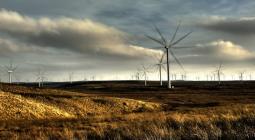What’s causing climate change, in 10 charts.

Different ways of looking at the problem.
With heat waves, wildfires, intense hurricanes, and other extreme weather events in the headlines, the ravages of climate change have become undeniable and unavoidable. Who or what is responsible for this?
It seems like a simple enough question, but like so many things about climate change, it gets more complicated the more you look into it. It turns out there are a number of ways of divvying up the blame.
To illustrate the point, I’ve borrowed some charts from a recent research note by the investment firm Morgan Stanley (with permission). They help distinguish who is emitting now from who emitted in the past, who’s emitting more and less over time, and which fuels and activities are driving the change. None of this data is original — it’s all public — but putting these charts in one place can help us wrap our minds around the many different ways that questions about responsibility for climate change can be phrased.
What question do we ask when we ask who’s to blame for climate change?
If the question is which country currently emits the most greenhouse gas emissions, the answer is China.

If the question is which country or region emits the most greenhouse gases, the answer is ... still China, but “Other Asia” is coming up fast (even as Europe declines).

If the question is which country’s people emit the most greenhouse gases on a per-capita basis, the answer is Americans, by a fairly wide margin. (Canada and Australia also have high per-capita emissions, as do a few Middle Eastern countries, not on this chart.)

If the question is which region or country is responsible for the biggest portion of the greenhouse gases already in the atmosphere, for a long time, the answer was Europe ...
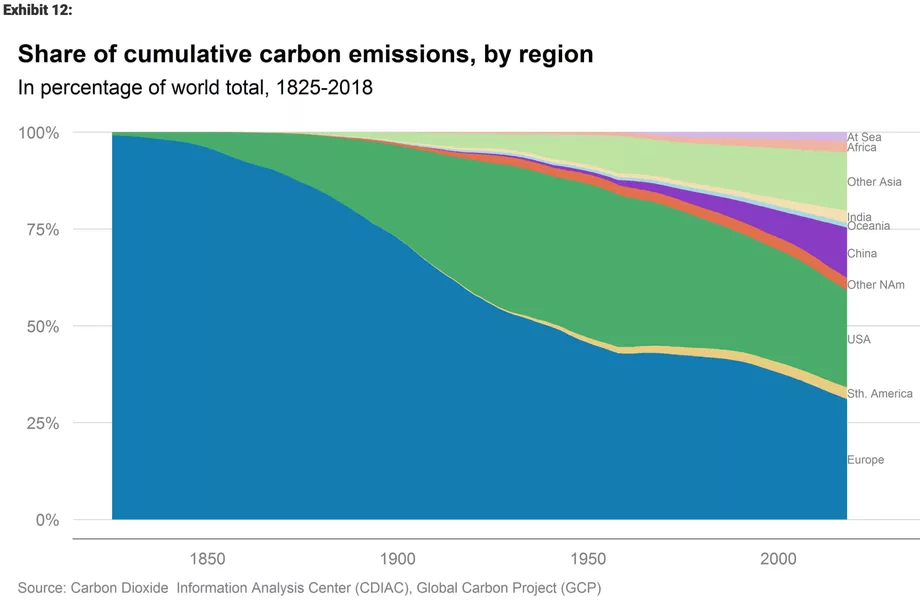
... and today it still is (with Russia and the rest of Eastern Europe included), with North America and Asia tied for second, according to Our World in Data.
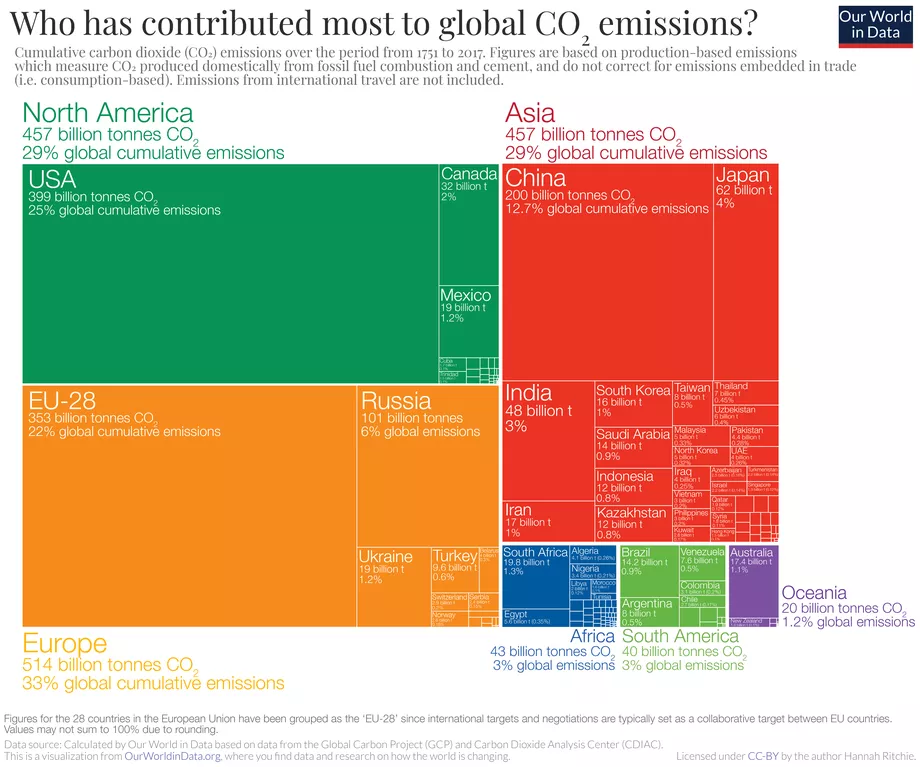
If the question is which individual country is responsible for the most emissions, it’s the US, at almost double its nearest competitor, China.
If the question is which country or region is heading fastest in the right direction, the answer is Europe. (Look at China — is that a peak or a pause?)

If the question is which fuel has contributed most to climate change, the answer, as of the 21st century, is coal, followed by oil and natural gas.
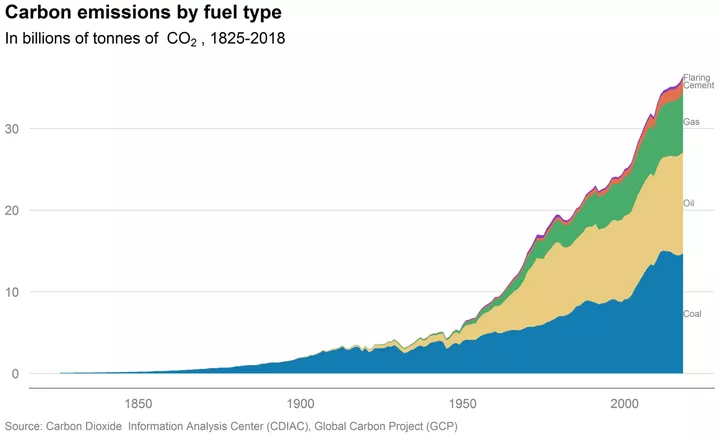
If the question is which economic sector contributes the most greenhouse gases, the answer is electricity and heat.
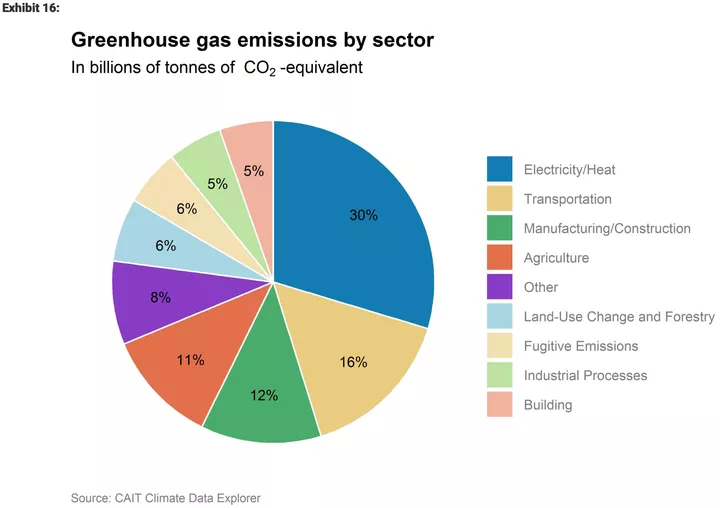
This chart from Our World in Data makes it even clearer that, globally, the rising demand for electricity and heating is the main driver of emissions, with transport rising at a distant second.
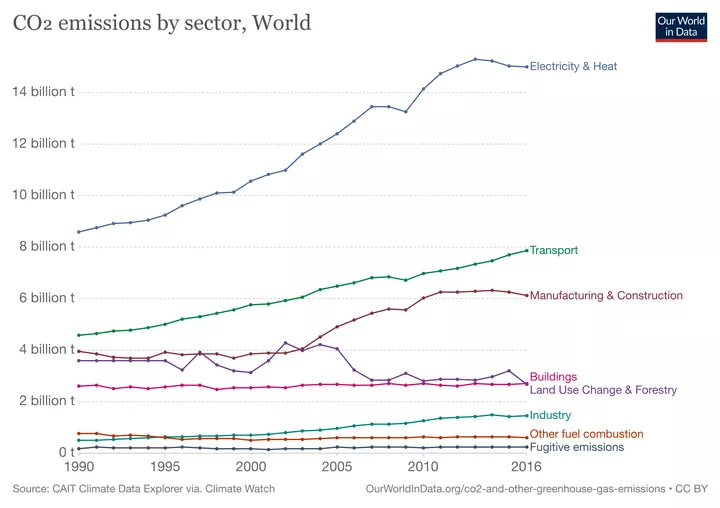
(Note that in the US, the situation is somewhat different — transportation emissions arerising and electricity sector emissions are falling. The lines recently crossed.)
The story told by the data
The story told by these charts is familiar to people who have followed climate change for a while. Fossil-fueled industrial development came to the EU, then it came to North America, and just as it was getting underway in China, the world found out that, oops, this development is going to destabilize the atmosphere and potentially devastate the biosphere. And what’s more, the amount of greenhouse gases already in the atmosphere means that humanity’s remaining carbon budget is perilously low. The model of development with a proven record of success has been revealed as extremely dangerous if it continues as it has in the past.
That’s a raw deal for China, as well as India, Vietnam, and other countries trying to raise their citizens to the level of affluence and comfort afforded those in the West. At the same time, it is mostly emerging economies that face the greatest risks from climate change, so they simply must change course, at their own peril.
In this mess of a situation, the answer to the question of responsibility for climate change is always yes, and. Yes, North America and the EU ought to acknowledge their historical responsibility for emissions. They ate up most of the carbon budget, developing in a way that is now off limits to the world’s billions of poor people. In exchange for this good fortune, they have an obligation to help the emerging economies of the world shift to sustainable development and increase their resilience to the climate damages.
And China, India, and other developing nations have a responsibility to see that, for better or worse, they are in the climate driver’s seat in the coming century and that every bit of fossil-fueled development bakes in more suffering later in the century.
North America and the EU owe the world some room (and some help) to raise their standard of living; the rest of the world owes it to itself to try to decouple welfare from material consumption and waste.
In the end, the conversation about responsibility leads where all climate conversations lead: The only hope of avoiding catastrophic damage is most every country decarbonizing as rapidly as they are capable, regardless of their histories and rivalries.
Electricity must be rapidly decarbonized to get rid of coal; heating and transportation must be rapidly electrified to get rid of oil and natural gas. Wealthy countries should mobilize to drive down the costs of clean-energy technologies through research and large-scale deployment; developing nations should work as hard as possible to substitute clean technologies when long-term industrial policy and infrastructure decisions are being made. And those with resources should help those with fewer prepare for the turbulent century to come.
Whoever’s fault it is, we either all chip in to solve it or we all suffer.
11 September 2020
Vox


